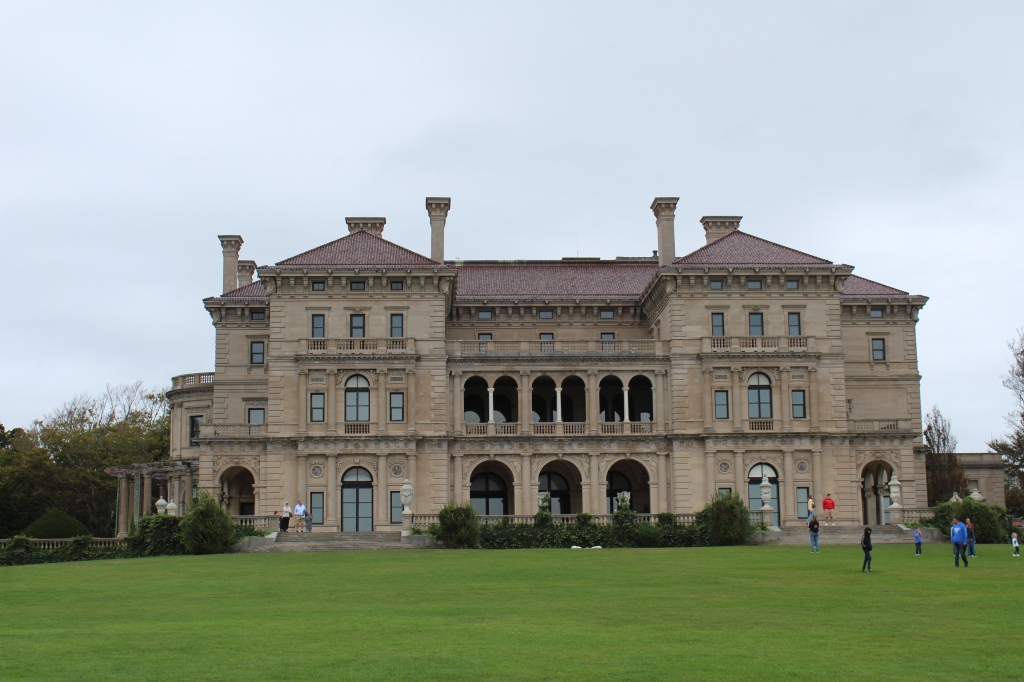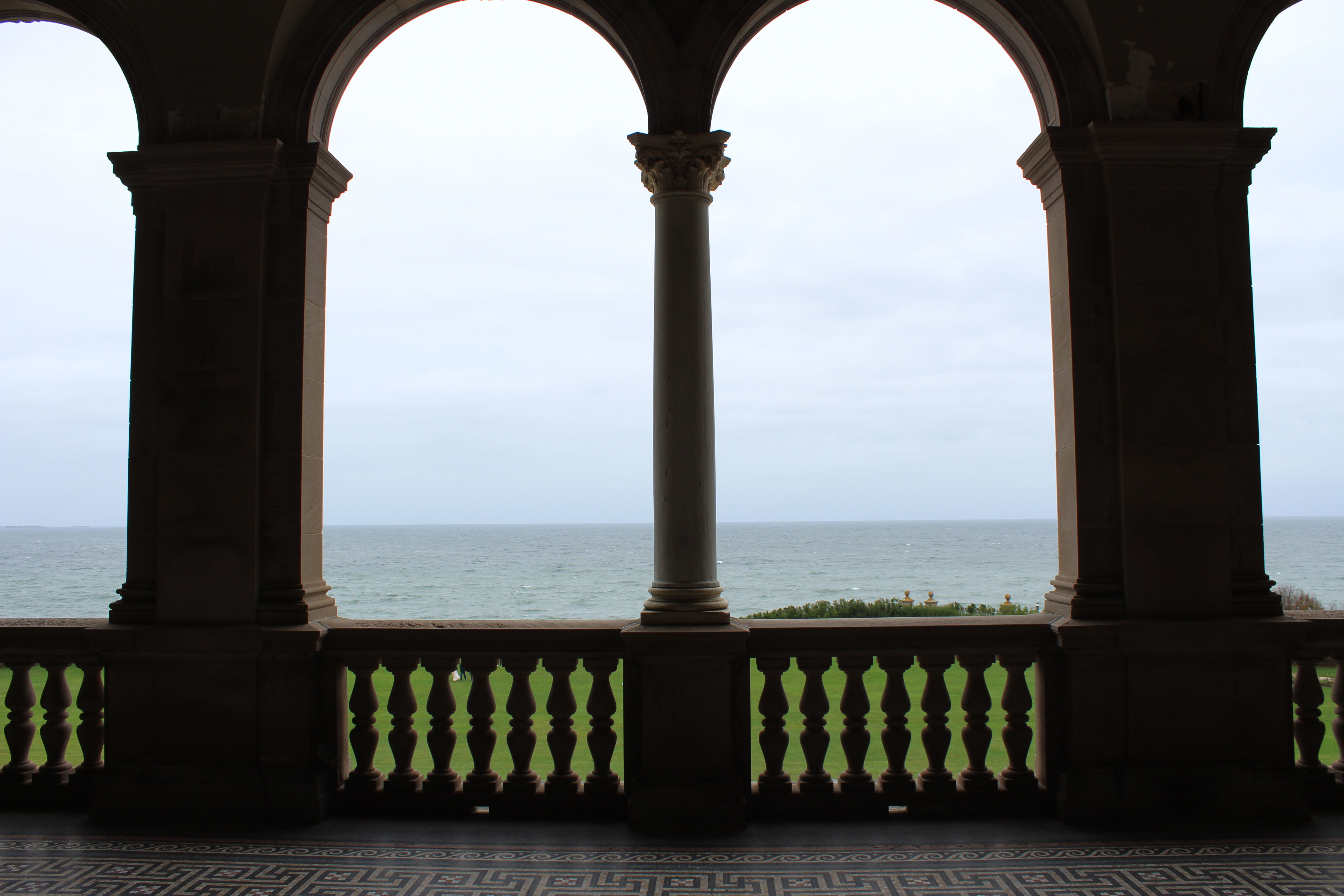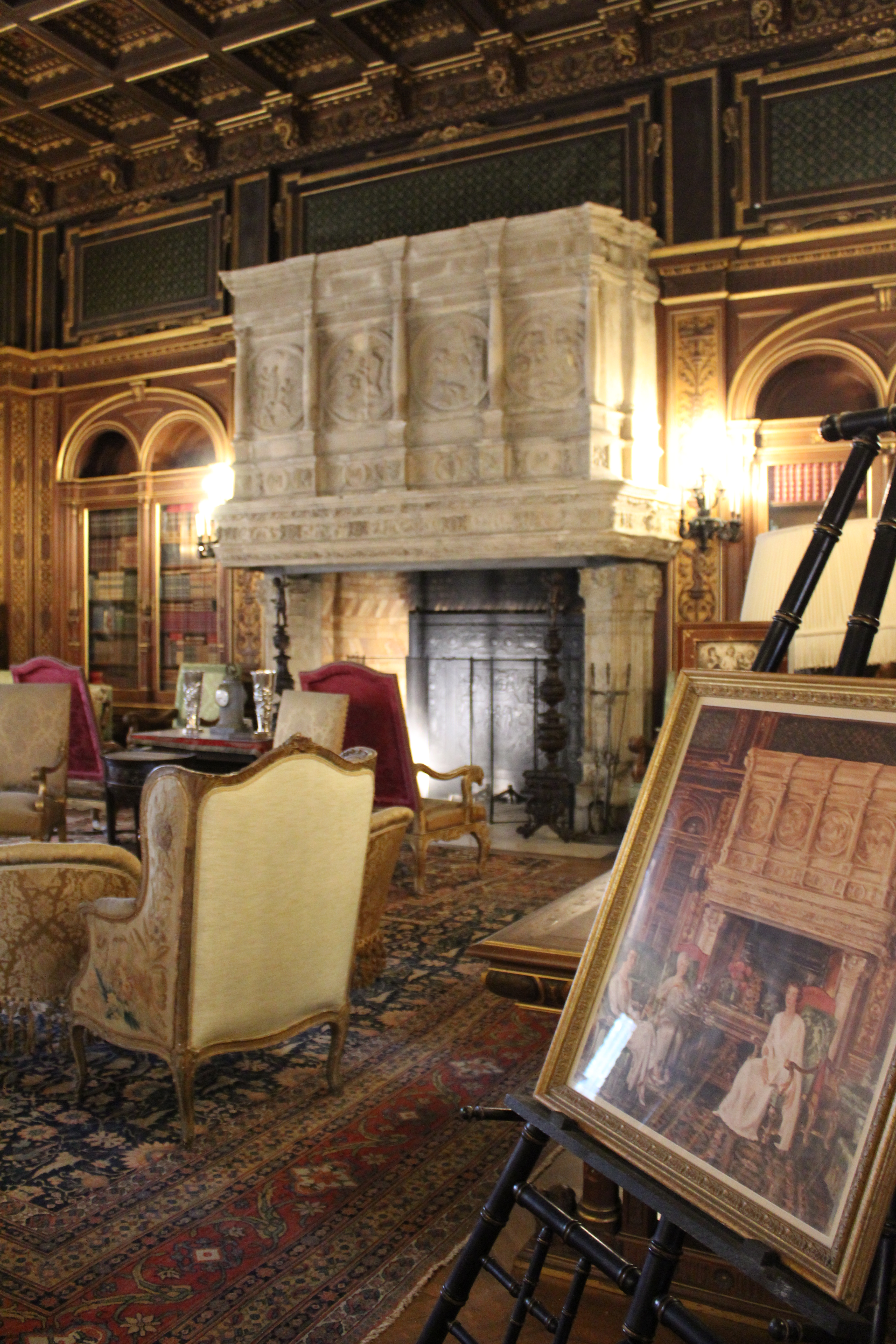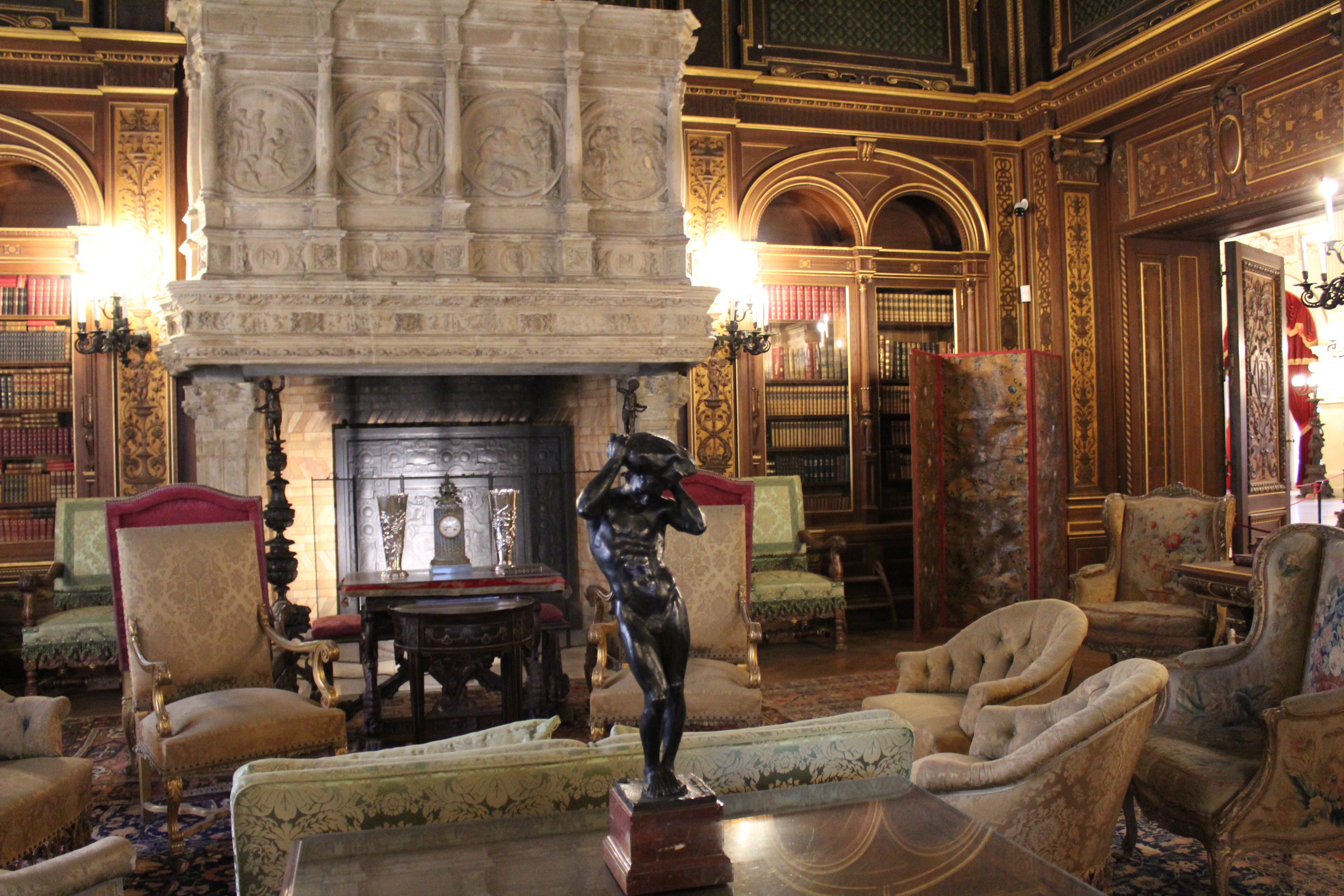Late nineteenth-century American decorative arts and architecture are on full display with the new historical drama, The Gilded Age. Fueled by rapid industrialization, The Gilded Age is set during a time of unprecedented economic development and opulence in the United States. As the young nation cemented its position as a global power, the wealthiest in American society used architecture as one outlet to display their fortunes. The producers of the show chose to film at the Newport Mansions, a collection of eleven palatial estates that stand testament to the exorbitant wealth wielded by the most prominent members of society during this period. The properties are maintained by the Preservation Society of Newport County in Rhode Island. Specifically, the show selected period appropriate rooms at The Breakers, Marble House, The Elms, Rosecliff, Chateau-sur-Mer and Hunter House for the first season. In October I planned a long weekend to Newport and had the opportunity to tour several of these estates.
At the Newport Mansions, guests are invited to explore the interiors and exteriors of these homes and learn about their former residents. During my trip, I visited three mansions: The Breakers, Marble House, and The Elms.
The Breakers is the crown jewel of the Newport Mansions. Cornelius Vanderbilt II commissioned world-renowned architect Richard Morris Hunt to design a 138,300 square foot estate with a whopping 70 rooms overlooking Easton Bay. No expense was spared in the construction of this summer home which lasted from 1893-1895. Open-air courtyards and marble imports illustrate the profound stylistic influence of Italian Renaissance palaces throughout The Breakers. On my self-guided tour, I strolled through the ballroom, known as the Grand Hall, bedrooms belonging to members of the Vanderbilt family, and the Kitchen and Butler’s Pantry on the lower levels, many of which appear in cameos throughout the series. The written self-guided tour as well as the layout of the rooms balanced the interpretation of the history of the family while simultaneously explaining the art and architectural significance of The Breakers.










My favorite mansion turned out to be a gift from a husband to his wife. William Kissam Vanderbilt gifted Marble House to Alva Vanderbilt for her 39th birthday. Richard Morris Hunt also designed the 50-room Beaux Arts style summer cottage which was built between 1888-1892. Inside the home, Alva displayed her Medieval and Renaissance collection in the Gothic Room. The stained-glass windows and rich red walls cause an overflow of guests at the end of the hallway who cram themselves in to bask in the warm glow of this sensational space. This room alone left quite an impression on me, as my previous posts show I am a fan of Gothic cathedrals.
To switch things up, the last cottage I toured belonged to a different family and was similarly designed by another architect. The Elms was the summer residence of Mr. and Mrs. Edward Julius Berwind. The Philadelphia natives commissioned Horace Trumbauer to design the structure, which lasted from 1899 to 1901. Trumbauer’s work drew inspiration from French and European styles.
Unlike the other mansions I toured, the majority of the internal fixtures at The Elms are not original to the house. In the 1960s the Berwind descendants no longer wanted to maintain the estate. They decided to auction off the majority of the possessions and sold The Elms to a developer. With this lack of original pieces linked to the house, the ingenious interpretation incorporates watercolors of what the space would have looked like with the original furnishings in every room. This mansion showcases the ongoing work of the Preservation Society, to reunite the sold artifacts with their former home. In 2012, the Preservation Society procured the last two Venetian paintings that were traditionally displayed in the dining room and lined the entrance foyer. These monumental works command the attention of guests upon entry through the front door, and are a must see at The Elms.


I really enjoyed the visual interpretation plan at The Elms, because it fueled a little research rabbit hole I found myself in on the car ride home from Rhode Island. One of the watercolors on display included the faint outline of a portrait hanging over a table. The composition seemed vaguely familiar. After ruminating on this for a few minutes, I discovered that it was a simplified version of Adélaïde Labille-Guiard’s famed painting at the Metropolitan Museum of Art. Upon investigating the provenance, I learned that the Berwind had owned this painting at one point until they gifted it to the Met in 1953.

I highly recommend a visit to the Newport Mansions. If you enjoyed The Gilded Age as much as me, and are looking for a road trip (with good lobster) this summer – I would suggest booking your trip to Newport now as I anticipate tourists will descend upon this area in light of the show.
Also – if you have not watched the Gilded Age, and enjoyed this post – it’s a sign to tune into HBO!
Categories: #marysmusings, #museum



